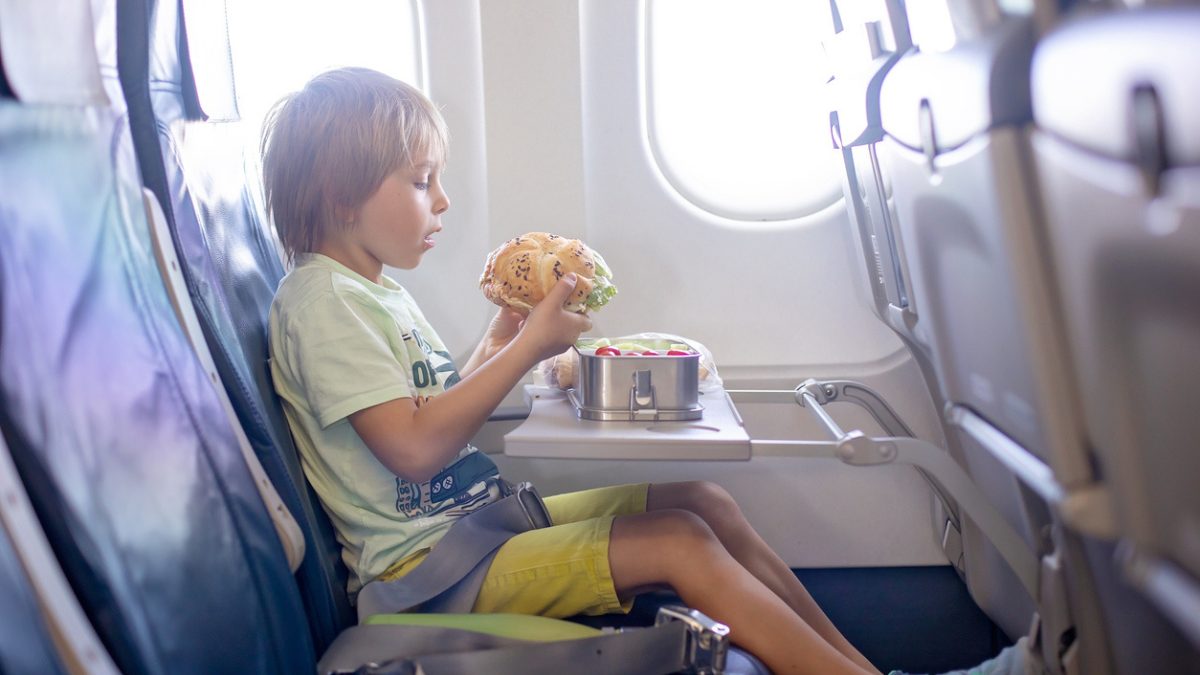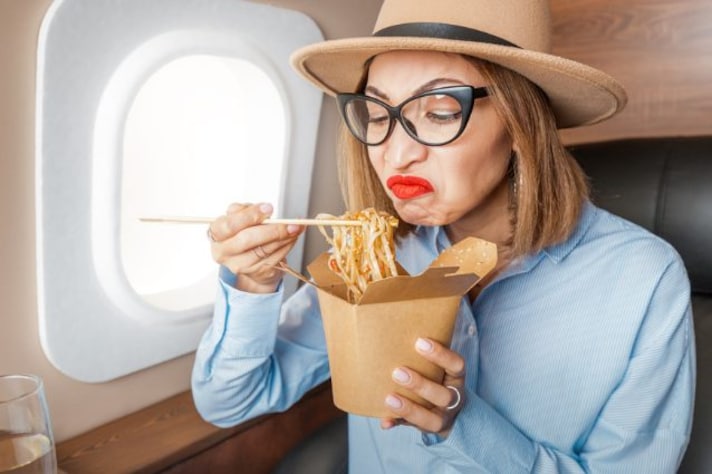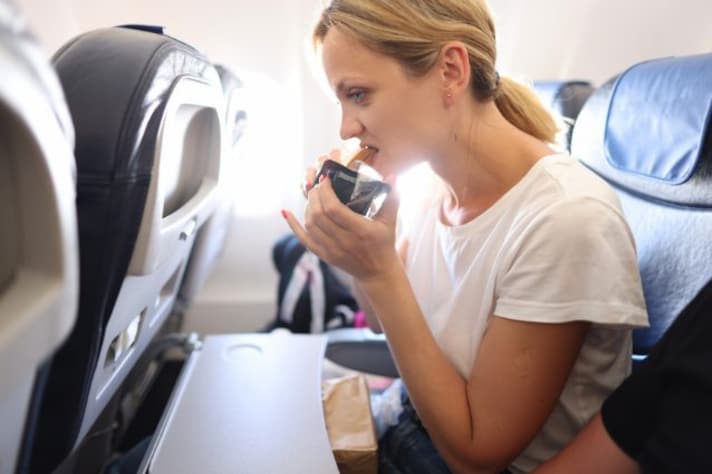
Air travel already comes with its fair share of discomfort—tight seats, recycled air, and the occasional crying baby. But nothing tests the patience of fellow passengers and flight attendants quite like a poorly chosen in-flight snack. According to etiquette experts and former flight crew members, some foods are so disruptive, smelly, or messy that they should be permanently grounded.
Smells That Linger Longer Than Your Layover
The number one offense? Odorous foods. Tuna sandwiches, egg salad, and fish entrées top the list of culinary culprits that can turn a cabin into a sensory nightmare. Jacqueline Whitmore, a former flight attendant and founder of The Protocol School of Palm Beach, warns that strong smells “linger in a confined cabin,” making it nearly impossible for nearby passengers to escape the stench.
Other offenders include garlic-heavy dishes, onion-laced meals, and pungent cheeses. Even seemingly innocent snacks like salmon jerky or barbecue corn nuts can unleash a cloud of aroma that clings to clothes and upholstery.
Messy Meals and Mid-Air Mayhem
Beyond smell, messiness is another major no-no. Foods that require assembly—think tacos, chili dogs, or spaghetti—are best left for your destination. Powdered donuts, croissants, and ribs may sound tempting, but they’re prone to crumbling, dripping, or smearing across tray tables and seat cushions.

Flight attendants also caution against snacks that scatter easily, like popcorn or Goldfish crackers. These dry foods may seem harmless until turbulence turns them into airborne projectiles.
Allergens and Airborne Risks
In a shared space, food allergies are more than a personal concern—they’re a public safety issue. Whitmore advises avoiding peanuts, peanut butter, and other common allergens, especially since some passengers can react to airborne particles alone. While not all allergies are triggered by scent or proximity, it’s better to err on the side of caution.
Foods That Fight Your Digestive System
Cabin pressure changes can wreak havoc on your gut, so experts recommend skipping gas-inducing foods like beans, broccoli, cauliflower, and kale. These fiber-rich options may be healthy on the ground, but in the air, they can lead to bloating, discomfort, and awkward moments.
Carbonated drinks, dairy-heavy meals, and spicy dishes like curry also make the do-not-pack list. They’re known to cause indigestion, dehydration, and even nausea when consumed mid-flight.

The Better Way to Snack in the Sky
So what should you bring? Etiquette experts suggest neutral-smelling, easy-to-eat foods like fresh fruit, crackers, cheese sticks, hummus and veggies, muffins, or protein bars. These options are less likely to offend noses, spill on seats, or trigger allergic reactions.
Ultimately, good airplane food etiquette is about consideration. As Nick Leighton, co-host of the etiquette podcast Were You Raised By Wolves?, puts it: “Smells need to stay within your bubble.” And when your bubble is shared with 150 strangers, that’s a rule worth following.
;Resize,width=767;)
